Navigation
Install the app
How to install the app on iOS
Follow along with the video below to see how to install our site as a web app on your home screen.

Note: This feature currently requires accessing the site using the built-in Safari browser.
More options
You are using an out of date browser. It may not display this or other websites correctly.
You should upgrade or use an alternative browser.
You should upgrade or use an alternative browser.
Prime Lenses: Canon vs Nikon, Who makes them best?
- Thread starter Jin
- Start date
Petraio Prime
TPF Noob!
- Joined
- May 28, 2010
- Messages
- 1,217
- Reaction score
- 0
- Location
- Ohio
- Can others edit my Photos
- Photos NOT OK to edit
Honestly there is only one difference between Nikon and Canon and it hardly affects anyone - and that is the Canon MPE65mm macro - the only single lens (that I know of) that goes from 1:1 magnificatio to 5:1 magnification.
That said its really only of concern for those of use who want to take pictures of a fly's eye. And even though the lens is unique to canon there are other options that Nikon (and other brand) users can use (such as microscope elements and bellows setups) which can achive similar or even superior quality images.
As for a by price comparison it was the case that Nikon lenses (At the expensive end) were generally more expensive than Canon brand lenses (very much noticable in the telephoto ranges). However as for quality whilst tests and such might show differences I've yet to see either company able to totally outclass the other - they are both pretty much equal in the market - heck sigma and tamron are also able to make lenses that can achive similar highclass level optical quality.
A significant difference between off-brand and camera-maker lenses is durability and construction quality, not to mention sample-to-sample consistency. Some of my Leicaflex lenses are more than 35 years old and perform like new. A cheap lens may produce good quality when new, but after years of use, well let's just say they have a shorter life-span. They are also more variable in quality from sample to sample.
CanonFreak
TPF Noob!
- Joined
- Jul 14, 2010
- Messages
- 14
- Reaction score
- 0
- Location
- Misawa, Japan
- Can others edit my Photos
- Photos OK to edit
Nikon Optics are the best in the World. There is a reason that Nikon is the worlds largest microscope glass manufacture.
You can't take price into account, when talking about what is best!
I own a pair of LX compact Nikon binoculars, and I aggree they make amazing glass. I am actually planning on getting a pair of EDG full size ones, when I get the money.
I don't feel that they make better prime lenses than Canon though, which was the topic here.
When you get into the fast 300mm and longer primes, Canon has no equal.
Why do you think that its always a sea of white lenses at major sporting events?
Canon also makes the finest 85mm and 35mm primes in my opinion(L series).
Petraio Prime
TPF Noob!
- Joined
- May 28, 2010
- Messages
- 1,217
- Reaction score
- 0
- Location
- Ohio
- Can others edit my Photos
- Photos NOT OK to edit
Nikon Optics are the best in the World. There is a reason that Nikon is the worlds largest microscope glass manufacture.
You can't take price into account, when talking about what is best!
I own a pair of LX compact Nikon binoculars, and I aggree they make amazing glass. I am actually planning on getting a pair of EDG full size ones, when I get the money.
I don't feel that they make better prime lenses than Canon though, which was the topic here.
When you get into the fast 300mm and longer primes, Canon has no equal.
Why do you think that its always a sea of white lenses at major sporting events?
Canon also makes the finest 85mm and 35mm primes in my opinion(L series).
90mm Summicron APO-ASPH is fantastic. No equal from Canon or Nikon.
CanonFreak
TPF Noob!
- Joined
- Jul 14, 2010
- Messages
- 14
- Reaction score
- 0
- Location
- Misawa, Japan
- Can others edit my Photos
- Photos OK to edit
Nikon Optics are the best in the World. There is a reason that Nikon is the worlds largest microscope glass manufacture.
You can't take price into account, when talking about what is best!
I own a pair of LX compact Nikon binoculars, and I aggree they make amazing glass. I am actually planning on getting a pair of EDG full size ones, when I get the money.
I don't feel that they make better prime lenses than Canon though, which was the topic here.
When you get into the fast 300mm and longer primes, Canon has no equal.
Why do you think that its always a sea of white lenses at major sporting events?
Canon also makes the finest 85mm and 35mm primes in my opinion(L series).
90mm Summicron APO-ASPH is fantastic. No equal from Canon or Nikon.
I still don't see where this is going.
Are we discussing what lenses are best out of all available, or just Canon and Nikon?
Derrel
Mr. Rain Cloud
- Joined
- Jul 23, 2009
- Messages
- 48,225
- Reaction score
- 18,941
- Location
- USA
- Website
- www.pbase.com
- Can others edit my Photos
- Photos OK to edit
Both companies make some good prime lenses. Lenses must be taken on a lens-by-lens basis, and blanket statements are hard to back up. "Generally" however, Canon's wide-angle prime lenses have been behind Nikon's wide-angle lens designs, with Canon having earned a reputation as offering poor corner performance in wide-angle lenses. Currently, Nikon 's 14-24mm zoom lens is perhaps the single best wide-angle lens, zoom or prime, at multiple focal lengths, easily out-performing Canon's 16-35 L-II and easily beating Canon's 24mm f/1.4-L lens from the center of the frame all the way to the corners. Yes, some modern zooms are better,optically, than prime lenses!
I own some Canon and a lot of Nikon lenses. A case where the two companies offer equal sharpness and contrast would be the 135mm f/2 models: the Nikon 135 D.C. is as sharp and contrasty as the Canon 135-L, but the Nikon has defocus control. Both have lovely bokeh. Nikon's 135mm f/2 Defocus Control is a better lens than Canon's 135mm f/2.8 Soft Focus, but then again, the Nikon costs about 3x as much money as the Canon Soft Focus lens.
"Newer is better". Nikon's 24mm f/1.4 AF-S G is a better-corrected lens than Canon's aged 24mm f/1.4-L is. The Nikon is much newer, and better-computed.
"Better is better". Nikon's 50mm f/1.8 AF-D is a quite decent lens, even though the design dates to the 1980's. Canon's 50mm 1.8 EF-II is a piece of crap by comparison, lacking one lens element and having a 5-bladed diaphragm (both egregious cost-cutting measures) and it has to be one of the cheapest made lenses in the entire Canon lineup, what with its plastic lens mount and pop-riveted together barrel construction (seriously).
Nikon's long primes are without peer, in my opinion: better bokeh than other brands. The 200mm f/2 VR-G is the best bokeh lens in the world, IMHO. Casnon's reputation as having better loing primes than Nikon is from the 1990's...I think Nikon has recently just edged Canon out, since Nikon re-designed all its big glass--their 200,300/2.8,400 2.8,500/4,and 600mm f/4 models are all newer than Canon's now decade-old designs.
None of this really matters much though--the prime lenses are all excellent. It's no longer the 1960's or 1970's, so even the "worse" lens from Canon or Nikon is typically good enough for all but the most-demanding users.
Oh, which is the better pickup? Ford or Chevy? ANd then, which is better, Coke or Pepsi?
I own some Canon and a lot of Nikon lenses. A case where the two companies offer equal sharpness and contrast would be the 135mm f/2 models: the Nikon 135 D.C. is as sharp and contrasty as the Canon 135-L, but the Nikon has defocus control. Both have lovely bokeh. Nikon's 135mm f/2 Defocus Control is a better lens than Canon's 135mm f/2.8 Soft Focus, but then again, the Nikon costs about 3x as much money as the Canon Soft Focus lens.
"Newer is better". Nikon's 24mm f/1.4 AF-S G is a better-corrected lens than Canon's aged 24mm f/1.4-L is. The Nikon is much newer, and better-computed.
"Better is better". Nikon's 50mm f/1.8 AF-D is a quite decent lens, even though the design dates to the 1980's. Canon's 50mm 1.8 EF-II is a piece of crap by comparison, lacking one lens element and having a 5-bladed diaphragm (both egregious cost-cutting measures) and it has to be one of the cheapest made lenses in the entire Canon lineup, what with its plastic lens mount and pop-riveted together barrel construction (seriously).
Nikon's long primes are without peer, in my opinion: better bokeh than other brands. The 200mm f/2 VR-G is the best bokeh lens in the world, IMHO. Casnon's reputation as having better loing primes than Nikon is from the 1990's...I think Nikon has recently just edged Canon out, since Nikon re-designed all its big glass--their 200,300/2.8,400 2.8,500/4,and 600mm f/4 models are all newer than Canon's now decade-old designs.
None of this really matters much though--the prime lenses are all excellent. It's no longer the 1960's or 1970's, so even the "worse" lens from Canon or Nikon is typically good enough for all but the most-demanding users.
Oh, which is the better pickup? Ford or Chevy? ANd then, which is better, Coke or Pepsi?
CanonFreak
TPF Noob!
- Joined
- Jul 14, 2010
- Messages
- 14
- Reaction score
- 0
- Location
- Misawa, Japan
- Can others edit my Photos
- Photos OK to edit
Both companies make some good prime lenses. Lenses must be taken on a lens-by-lens basis, and blanket statements are hard to back up. "Generally" however, Canon's wide-angle prime lenses have been behind Nikon's wide-angle lens designs, with Canon having earned a reputation as offering poor corner performance in wide-angle lenses. Currently, Nikon 's 14-24mm zoom lens is perhaps the single best wide-angle lens, zoom or prime, at multiple focal lengths, easily out-performing Canon's 16-35 L-II and easily beating Canon's 24mm f/1.4-L lens from the center of the frame all the way to the corners. Yes, some modern zooms are better,optically, than prime lenses!
I own some Canon and a lot of Nikon lenses. A case where the two companies offer equal sharpness and contrast would be the 135mm f/2 models: the Nikon 135 D.C. is as sharp and contrasty as the Canon 135-L, but the Nikon has defocus control. Both have lovely bokeh. Nikon's 135mm f/2 Defocus Control is a better lens than Canon's 135mm f/2.8 Soft Focus, but then again, the Nikon costs about 3x as much money as the Canon Soft Focus lens.
"Newer is better". Nikon's 24mm f/1.4 AF-S G is a better-corrected lens than Canon's aged 24mm f/1.4-L is. The Nikon is much newer, and better-computed.
"Better is better". Nikon's 50mm f/1.8 AF-D is a quite decent lens, even though the design dates to the 1980's. Canon's 50mm 1.8 EF-II is a piece of crap by comparison, lacking one lens element and having a 5-bladed diaphragm (both egregious cost-cutting measures) and it has to be one of the cheapest made lenses in the entire Canon lineup, what with its plastic lens mount and pop-riveted together barrel construction (seriously).
Nikon's long primes are without peer, in my opinion: better bokeh than other brands. The 200mm f/2 VR-G is the best bokeh lens in the world, IMHO. Casnon's reputation as having better loing primes than Nikon is from the 1990's...I think Nikon has recently just edged Canon out, since Nikon re-designed all its big glass--their 200,300/2.8,400 2.8,500/4,and 600mm f/4 models are all newer than Canon's now decade-old designs.
None of this really matters much though--the prime lenses are all excellent. It's no longer the 1960's or 1970's, so even the "worse" lens from Canon or Nikon is typically good enough for all but the most-demanding users.
Oh, which is the better pickup? Ford or Chevy? ANd then, which is better, Coke or Pepsi?
You do make some real good points here, I will give you that.
The 24mm Nikon is better than the Canon offering.
You keep refering to "newer" and "old designs". Remember that lens technology and development moves much slower than say DSLR sensor evolution. If you get it right to begin with with glass, theres not really a lot to improve on, at least until technology catches up. From my understanding in 10-20 years in lens evolution not all that much has changed really.
Canon still has quite a few of the best in class lenses, at least compared to Nikon.
You didn't even mention the Canon 85mm 1.2L, which is without a doubt better than the Nikon 85mm 1.4D.
Many people would also argue that the Canon 85mm 1.2 is the best bokeh lens of all the Canon and Nikon offerings, not the Nikon 200mm f2.
So the more I think about it, they are actually closer to equal then many of us probably want to admit.
It seems that it depends more on what exact lens type you are comparing, than an overall comparison.
That brings us to a whole system comparison.....another thread perhaps?
Petraio Prime
TPF Noob!
- Joined
- May 28, 2010
- Messages
- 1,217
- Reaction score
- 0
- Location
- Ohio
- Can others edit my Photos
- Photos NOT OK to edit
Both companies make some good prime lenses. Lenses must be taken on a lens-by-lens basis, and blanket statements are hard to back up. "Generally" however, Canon's wide-angle prime lenses have been behind Nikon's wide-angle lens designs, with Canon having earned a reputation as offering poor corner performance in wide-angle lenses. Currently, Nikon 's 14-24mm zoom lens is perhaps the single best wide-angle lens, zoom or prime, at multiple focal lengths, easily out-performing Canon's 16-35 L-II and easily beating Canon's 24mm f/1.4-L lens from the center of the frame all the way to the corners. Yes, some modern zooms are better,optically, than prime lenses!
I own some Canon and a lot of Nikon lenses. A case where the two companies offer equal sharpness and contrast would be the 135mm f/2 models: the Nikon 135 D.C. is as sharp and contrasty as the Canon 135-L, but the Nikon has defocus control. Both have lovely bokeh. Nikon's 135mm f/2 Defocus Control is a better lens than Canon's 135mm f/2.8 Soft Focus, but then again, the Nikon costs about 3x as much money as the Canon Soft Focus lens.
"Newer is better". Nikon's 24mm f/1.4 AF-S G is a better-corrected lens than Canon's aged 24mm f/1.4-L is. The Nikon is much newer, and better-computed.
"Better is better". Nikon's 50mm f/1.8 AF-D is a quite decent lens, even though the design dates to the 1980's. Canon's 50mm 1.8 EF-II is a piece of crap by comparison, lacking one lens element and having a 5-bladed diaphragm (both egregious cost-cutting measures) and it has to be one of the cheapest made lenses in the entire Canon lineup, what with its plastic lens mount and pop-riveted together barrel construction (seriously).
Nikon's long primes are without peer, in my opinion: better bokeh than other brands. The 200mm f/2 VR-G is the best bokeh lens in the world, IMHO. Casnon's reputation as having better loing primes than Nikon is from the 1990's...I think Nikon has recently just edged Canon out, since Nikon re-designed all its big glass--their 200,300/2.8,400 2.8,500/4,and 600mm f/4 models are all newer than Canon's now decade-old designs.
None of this really matters much though--the prime lenses are all excellent. It's no longer the 1960's or 1970's, so even the "worse" lens from Canon or Nikon is typically good enough for all but the most-demanding users.
Oh, which is the better pickup? Ford or Chevy? ANd then, which is better, Coke or Pepsi?
You do make some real good points here, I will give you that.
The 24mm Nikon is better than the Canon offering.
You keep refering to "newer" and "old designs". Remember that lens technology and development moves much slower than say DSLR sensor evolution. If you get it right to begin with with glass, theres not really a lot to improve on, at least until technology catches up. From my understanding in 10-20 years in lens evolution not all that much has changed really.
Canon still has quite a few of the best in class lenses, at least compared to Nikon.
You didn't even mention the Canon 85mm 1.2L, which is without a doubt better than the Nikon 85mm 1.4D.
Many people would also argue that the Canon 85mm 1.2 is the best bokeh lens of all the Canon and Nikon offerings, not the Nikon 200mm f2.
So the more I think about it, they are actually closer to equal then many of us probably want to admit.
It seems that it depends more on what exact lens type you are comparing, than an overall comparison.
That brings us to a whole system comparison.....another thread perhaps?
Most photographers have only a primitive understanding of lens design and manufacture. One point is that auto-focus lenses can never be as good (all else being equal) as manual-focus designs, because there has to be a certain amount of 'play' in the mount to accommodate auto-focus.
CanonFreak
TPF Noob!
- Joined
- Jul 14, 2010
- Messages
- 14
- Reaction score
- 0
- Location
- Misawa, Japan
- Can others edit my Photos
- Photos OK to edit
[/quote]
Most photographers have only a primitive understanding of lens design and manufacture. One point is that auto-focus lenses can never be as good (all else being equal) as manual-focus designs, because there has to be a certain amount of 'play' in the mount to accommodate auto-focus.[/QUOTE]
For most of us it is not realistic to buy the very best lenses.
A quick query on B&H of Leica Lenses for example shows the very cheapest one(of all mounts) at $1395.
It is easy to see why we are talking about Nikon vs Canon.
You say "never be as good" comparing auto-focus to manual focus lenses. What you must mean is "better image quality", because there is more to a lens than just image quality.
Canon and Nikon both clearly support and value auto-focus for their camera systems. And virtually all professionals and advanced amateurs shoot either Canon or Nikon DSLRs.
Ask some of the top professional sports photographers if they would want to give up auto-focus. What do you think they would say?
I understand there are lenses at the absolute bleeding edge of image quality, and some day I may be lucky enough to own some of them.
Theres no need to say things like Most photographers have only a primitive understanding of lens design. You just come off as an elitist, and for all I know I might own better gear than you.
Most photographers have only a primitive understanding of lens design and manufacture. One point is that auto-focus lenses can never be as good (all else being equal) as manual-focus designs, because there has to be a certain amount of 'play' in the mount to accommodate auto-focus.[/QUOTE]
For most of us it is not realistic to buy the very best lenses.
A quick query on B&H of Leica Lenses for example shows the very cheapest one(of all mounts) at $1395.
It is easy to see why we are talking about Nikon vs Canon.
You say "never be as good" comparing auto-focus to manual focus lenses. What you must mean is "better image quality", because there is more to a lens than just image quality.
Canon and Nikon both clearly support and value auto-focus for their camera systems. And virtually all professionals and advanced amateurs shoot either Canon or Nikon DSLRs.
Ask some of the top professional sports photographers if they would want to give up auto-focus. What do you think they would say?
I understand there are lenses at the absolute bleeding edge of image quality, and some day I may be lucky enough to own some of them.
Theres no need to say things like Most photographers have only a primitive understanding of lens design. You just come off as an elitist, and for all I know I might own better gear than you.
emh
TPF Noob!
- Joined
- Apr 19, 2010
- Messages
- 181
- Reaction score
- 3
- Location
- CA
- Can others edit my Photos
- Photos OK to edit
Why do you think that its always a sea of white lenses at major sporting events?
I don't know about that... I see more black & gold than white (these are from the Beijing Olympics):


Derrel
Mr. Rain Cloud
- Joined
- Jul 23, 2009
- Messages
- 48,225
- Reaction score
- 18,941
- Location
- USA
- Website
- www.pbase.com
- Can others edit my Photos
- Photos OK to edit
Lens design has improved over the last few years; 10 to 20 year-old designs, designed for use on film cameras, do not deliver the final light rays perpendicular to the sensor, which was *not* a problem with film, but which *is* a big problem with sensor wells, which tend to show very bad peripheral light fall-off (aka vignetting) when the light rays from the outer circle of the lens's image circle hit the sensor at an angle and not straight on. Olympus, for example, has designed an entire, brand-new set of lenses, all from the ground up, which are what most people refer to as "designed for digital" use, meaning that even in their wide-angle designs, the lenses deliver the light rays perpendicular to the sensor, ie "straight on."
Regarding the Canon 85mm f/1.2L versus the Nikkor 85mm f/1.4 AF-D: it's not clear that the Canon is the better optic: the Canon has absolutely horrible chromatic aberration at its wider aperturtes, and creates some weird, swirling bokeh. The Nikkor lens has smoother,creamier,rounder bokeh than the Canon 1.2-L, and the NIkon focuses much,much,much more rapidly, and can actually be used for action work, whereas the Canon is a dog in terms of focusing speed. As far as the Canon 85/1.2-L being a bokeh champion, the Nikkor 200mm f/2 absolutely blows it away. On things like specular highlights or highlights on sunlight coming through trees, the 1.2-L creates an awful bokeh signature, but the 200mm creates an impressive, round, smooth bokeh signature. This one is a no-contest, and that makes sense, because the 200/2 is a no-holds-barred lens design with a $5,000 price limit, whereas the 85mm is a real-world design, with a $1,700 price limit on the design. Many people might argue the Canon 85 1.2L is the best bokeh lens, but then, they don't own the Nikjon 200mm f/2 either...
The idea that old versus new is not applicable doesn't make sense: currently, Canon is in the process of re-designing its lens lineup so that their lenses will work well on newer, higher-density image sensors. Canon just finished redesigning its 24mm and 45mm Tilt/Shift lenses, improving their optics and adding lens elements, for better correction and higher resolution. Canon just re-designed its 100mm macro lens, to bring it up to L standards.
The idea that an autofocus lens can "never be as good as manual-focus designs" is a fallacy: the top-line internal focusing AF lens designs move very small, lightweight focusing element groups, much like the Nikon internal focusing lenses invented in the 1970's with the 400/3.5 ED-Internal Focus premiered at the 1976 Montreal Olympics. By using small,light, internal element groups to focus, there is very little "play" in the mechanism, and the accuracy of the autofocusing systems in top cameras ensure more accurate focusing than manual focusing cameras, so the "advantage" of a manually focused lens often evaporates because the human focusing it cannot actually get the danged thing into accurate enough focus to realize the theoretical ( or hypothetical) "advantage" manual focusing lenses allegedly have.
One of the clearest examples of why we need "new" lens designs can be seen in one, specific camera: the Canon T2i: its small, high-density sensor makes many Canon lenses look like crap.
Regarding the Canon 85mm f/1.2L versus the Nikkor 85mm f/1.4 AF-D: it's not clear that the Canon is the better optic: the Canon has absolutely horrible chromatic aberration at its wider aperturtes, and creates some weird, swirling bokeh. The Nikkor lens has smoother,creamier,rounder bokeh than the Canon 1.2-L, and the NIkon focuses much,much,much more rapidly, and can actually be used for action work, whereas the Canon is a dog in terms of focusing speed. As far as the Canon 85/1.2-L being a bokeh champion, the Nikkor 200mm f/2 absolutely blows it away. On things like specular highlights or highlights on sunlight coming through trees, the 1.2-L creates an awful bokeh signature, but the 200mm creates an impressive, round, smooth bokeh signature. This one is a no-contest, and that makes sense, because the 200/2 is a no-holds-barred lens design with a $5,000 price limit, whereas the 85mm is a real-world design, with a $1,700 price limit on the design. Many people might argue the Canon 85 1.2L is the best bokeh lens, but then, they don't own the Nikjon 200mm f/2 either...
The idea that old versus new is not applicable doesn't make sense: currently, Canon is in the process of re-designing its lens lineup so that their lenses will work well on newer, higher-density image sensors. Canon just finished redesigning its 24mm and 45mm Tilt/Shift lenses, improving their optics and adding lens elements, for better correction and higher resolution. Canon just re-designed its 100mm macro lens, to bring it up to L standards.
The idea that an autofocus lens can "never be as good as manual-focus designs" is a fallacy: the top-line internal focusing AF lens designs move very small, lightweight focusing element groups, much like the Nikon internal focusing lenses invented in the 1970's with the 400/3.5 ED-Internal Focus premiered at the 1976 Montreal Olympics. By using small,light, internal element groups to focus, there is very little "play" in the mechanism, and the accuracy of the autofocusing systems in top cameras ensure more accurate focusing than manual focusing cameras, so the "advantage" of a manually focused lens often evaporates because the human focusing it cannot actually get the danged thing into accurate enough focus to realize the theoretical ( or hypothetical) "advantage" manual focusing lenses allegedly have.
One of the clearest examples of why we need "new" lens designs can be seen in one, specific camera: the Canon T2i: its small, high-density sensor makes many Canon lenses look like crap.
Last edited:
Petraio Prime
TPF Noob!
- Joined
- May 28, 2010
- Messages
- 1,217
- Reaction score
- 0
- Location
- Ohio
- Can others edit my Photos
- Photos NOT OK to edit
Most photographers have only a primitive understanding of lens design and manufacture. One point is that auto-focus lenses can never be as good (all else being equal) as manual-focus designs, because there has to be a certain amount of 'play' in the mount to accommodate auto-focus.[/QUOTE]
For most of us it is not realistic to buy the very best lenses.
A quick query on B&H of Leica Lenses for example shows the very cheapest one(of all mounts) at $1395.
It is easy to see why we are talking about Nikon vs Canon.
You say "never be as good" comparing auto-focus to manual focus lenses. What you must mean is "better image quality", because there is more to a lens than just image quality.
Canon and Nikon both clearly support and value auto-focus for their camera systems. And virtually all professionals and advanced amateurs shoot either Canon or Nikon DSLRs.
Ask some of the top professional sports photographers if they would want to give up auto-focus. What do you think they would say?
I understand there are lenses at the absolute bleeding edge of image quality, and some day I may be lucky enough to own some of them.
Theres no need to say things like Most photographers have only a primitive understanding of lens design. You just come off as an elitist, and for all I know I might own better gear than you.[/QUOTE]
Well it's true, and I include myself. It might be true that autofocus is a feature some people just won't give up, but as I said it does involve design compromises.
Erwin Puts is a very good source for information about optics.
Home
For most of us it is not realistic to buy the very best lenses.
A quick query on B&H of Leica Lenses for example shows the very cheapest one(of all mounts) at $1395.
It is easy to see why we are talking about Nikon vs Canon.
You say "never be as good" comparing auto-focus to manual focus lenses. What you must mean is "better image quality", because there is more to a lens than just image quality.
Canon and Nikon both clearly support and value auto-focus for their camera systems. And virtually all professionals and advanced amateurs shoot either Canon or Nikon DSLRs.
Ask some of the top professional sports photographers if they would want to give up auto-focus. What do you think they would say?
I understand there are lenses at the absolute bleeding edge of image quality, and some day I may be lucky enough to own some of them.
Theres no need to say things like Most photographers have only a primitive understanding of lens design. You just come off as an elitist, and for all I know I might own better gear than you.[/QUOTE]
Well it's true, and I include myself. It might be true that autofocus is a feature some people just won't give up, but as I said it does involve design compromises.
Erwin Puts is a very good source for information about optics.
Home
CanonFreak
TPF Noob!
- Joined
- Jul 14, 2010
- Messages
- 14
- Reaction score
- 0
- Location
- Misawa, Japan
- Can others edit my Photos
- Photos OK to edit
Why do you think that its always a sea of white lenses at major sporting events?
I don't know about that... I see more black & gold than white (these are from the Beijing Olympics):


Well it would seem that things are changing.
I know you know what I am talking about though. Over the last 10 years I have seen lots of the shots with mostly white canon lenses.
Maybe this is a sign of more pros switching to Nikon. This will be food for thought.
Petraio Prime
TPF Noob!
- Joined
- May 28, 2010
- Messages
- 1,217
- Reaction score
- 0
- Location
- Ohio
- Can others edit my Photos
- Photos NOT OK to edit
Most photographers have only a primitive understanding of lens design and manufacture. One point is that auto-focus lenses can never be as good (all else being equal) as manual-focus designs, because there has to be a certain amount of 'play' in the mount to accommodate auto-focus.
Erwin Puts is a very good source for information about optics:
Home
I do remember back in the early 70s when I first got my used Leicaflex SL and a new 90mm Elmarit-R, my photos were noticeably better than what I had been getting from the yearbook Nikon gear I had been using. The lone exception was the Nikkor 105 f/2.5, which was a great lens. I soon acquired a 50mm Summilux-R, 21mm Super-Angulon-R, and a 250mm Telyt-R. All were noticeably better than the equivalent or near-equivalent Nikkors.
By 'better' I mean more snap and contrast, less astigmatism, etc.
Well as far as gear is concerned, I am happy with my Leicaflex SL2 and six lenses (28, 50, 90, 180, 350, 560). Some of the lenses have been replaced with newer designs but of course the newer designs did not exist in the 70s; there is always going to be progress; you have to use the best that's available at the time. When Leica lenses are released and for a considerable time thereafter, they are generally state of the art. Usually only they can improve upon them. I recently acquired the second version of the 180 2.8 (1981 design), and it is noticeably better than the old first version (1968 design) that I had for 20 years, and smaller and lighter. There is a third, APO version, which is of course better yet, but I am happy at this point.
Well it's true, and I include myself. It might be true that autofocus is a feature some people just won't give up, but as I said it does involve design compromises. The same is true for vibration reduction technology.For most of us it is not realistic to buy the very best lenses.
A quick query on B&H of Leica Lenses for example shows the very cheapest one(of all mounts) at $1395.
It is easy to see why we are talking about Nikon vs Canon.
You say "never be as good" comparing auto-focus to manual focus lenses. What you must mean is "better image quality", because there is more to a lens than just image quality.
Canon and Nikon both clearly support and value auto-focus for their camera systems. And virtually all professionals and advanced amateurs shoot either Canon or Nikon DSLRs.
Ask some of the top professional sports photographers if they would want to give up auto-focus. What do you think they would say?
I understand there are lenses at the absolute bleeding edge of image quality, and some day I may be lucky enough to own some of them.
There’s no need to say things like “Most photographers have only a primitive understanding of lens design”. You just come off as an elitist, and for all I know I might own better gear than you.
Erwin Puts is a very good source for information about optics:
Home
I do remember back in the early 70s when I first got my used Leicaflex SL and a new 90mm Elmarit-R, my photos were noticeably better than what I had been getting from the yearbook Nikon gear I had been using. The lone exception was the Nikkor 105 f/2.5, which was a great lens. I soon acquired a 50mm Summilux-R, 21mm Super-Angulon-R, and a 250mm Telyt-R. All were noticeably better than the equivalent or near-equivalent Nikkors.
By 'better' I mean more snap and contrast, less astigmatism, etc.
Well as far as gear is concerned, I am happy with my Leicaflex SL2 and six lenses (28, 50, 90, 180, 350, 560). Some of the lenses have been replaced with newer designs but of course the newer designs did not exist in the 70s; there is always going to be progress; you have to use the best that's available at the time. When Leica lenses are released and for a considerable time thereafter, they are generally state of the art. Usually only they can improve upon them. I recently acquired the second version of the 180 2.8 (1981 design), and it is noticeably better than the old first version (1968 design) that I had for 20 years, and smaller and lighter. There is a third, APO version, which is of course better yet, but I am happy at this point.
Last edited:
CanonFreak
TPF Noob!
- Joined
- Jul 14, 2010
- Messages
- 14
- Reaction score
- 0
- Location
- Misawa, Japan
- Can others edit my Photos
- Photos OK to edit
I will be honest that I know very little about high end manual focus lenses, like the ones from Leica.
I think this would be a good homework assignment for me, to do research on them.
Maybe I should just save for a long time and make one of them my next lens. Theres no better way to understand something than to use and study it.
I think this would be a good homework assignment for me, to do research on them.
Maybe I should just save for a long time and make one of them my next lens. Theres no better way to understand something than to use and study it.
Most reactions
-
 424
424 -
 295
295 -
 285
285 -
 272
272 -
 222
222 -
 205
205 -
 185
185 -
 182
182 -
 169
169 -
 167
167 -
 147
147 -
 133
133 -
 120
120 -
 95
95 -
I
94
Similar threads
- Locked
- Replies
- 26
- Views
- 4K
- Replies
- 12
- Views
- 4K
- Replies
- 15
- Views
- 2K
- Replies
- 70
- Views
- 16K
- Replies
- 7
- Views
- 3K

![[No title]](/data/xfmg/thumbnail/30/30867-a58aa3d7c15d0b48498a201af3a68a8f.jpg?1619734485)

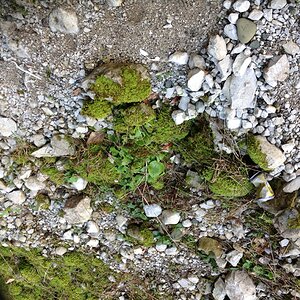
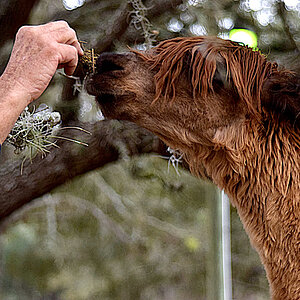

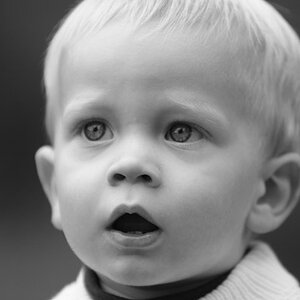
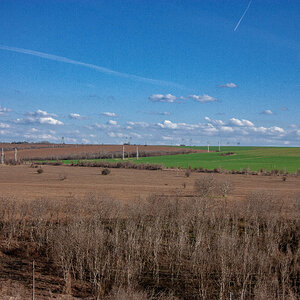
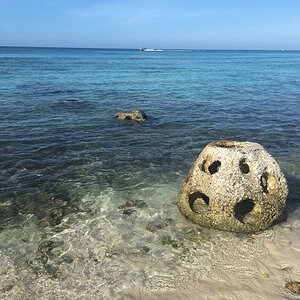

![[No title]](/data/xfmg/thumbnail/40/40309-c759bfd4ae7c079632e7402d21d332f1.jpg?1619739414)
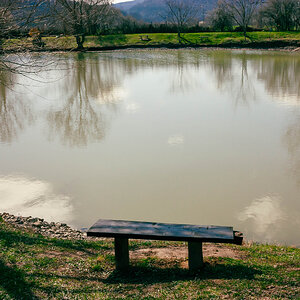
![[No title]](/data/xfmg/thumbnail/30/30865-3dc03385b0036f80524b0636d0d56f07.jpg?1619734484)